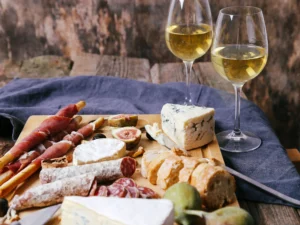Pasta is, no doubt, a cornerstone of Italian cuisine, a cultural heritage that has won hearts and taste buds all around the globe. And when it comes to pasta, the stuffed variety stands out for its rich flavors and deep-rooted traditions.
From the northern hills to the southern shores and from the eastern beauties to the western delights, every corner of Italy boasts a unique take on this delicacy. The variations come in shapes—rectangular or square, folded or crescent-shaped—and fillings—meat, cheese, veggies, or a medley of flavors. The regional twists and turns in recipes keep it exciting, and sometimes, within the same region, the same name can point to different mouthwatering creations.
In this article, we’re going to explore some of the most iconic types of stuffed pasta, from the elegant ravioli to the mouthwatering tortellini, and not to forget the broth-filled cappelletti to the Piedmontese pride: agnolotti. Each has a unique story and its own charisma in the culinary world.
Join us on a tasty journey through Italy, where we’ll uncover the diverse flavors of this exquisite pasta, a culinary marvel that has the magical power to bring people together from all corners of the globe.
Drop your bags and explore the city!
Find the perfect luggage storage nearby in just a few clicks and enjoy hassle-free exploration. Book your luggage storage today.

Drop your bags and explore the city!
Find the perfect luggage storage nearby in just a few clicks and enjoy hassle-free exploration. Book your luggage storage today.

Drop your bags and explore the city!
Find the perfect luggage storage nearby in just a few clicks and enjoy hassle-free exploration. Book your luggage storage today.

Play Store

App Store

Download the Bags Parking app!
Find your closest luggage storage and leave your suitcases for as long as you need. Enjoy your journey without the weight of your baggage.

Table of Contents
Table of Contents
Tortellini: Italy's irresistible stuffed pasta
Tortellini, those irresistible pockets of delight, have long been a topic of discussion regarding their birthplace, with Modena, Bologna, and Castelfranco Emilia all vying for the honor. However, one fact remains undisputed: Tortellini were born in Emilia.
According to legend, this culinary marvel first graced Castelfranco Emilia, a town nestled between Bologna and Modena. The credit goes to the innkeeper of the Corona Inn, who, peering through a keyhole, caught a glimpse of a noblewoman (some versions even claim she was the goddess Venus) and was struck by the perfection of her navel. In a culinary quest to replicate this, he fashioned a dough of eggs and flour, filling it with a mix of pork loin, prosciutto, Bologna mortadella, Parmigiano-Reggiano, eggs, and nutmeg.
Bolognese and Modenese tortellini boast significant differences, starting with their names: “turtlén” in Bologna and “turtléin” in Modena. The key disparity lies in the filling. Bolognese tortellini involve marinated pork loin with garlic, rosemary, salt, and pepper, slow-cooked with butter. The filling is then enriched with raw ham, Bologna mortadella, Parmesan, eggs, and finely ground nutmeg. In contrast, Modenese tortellini incorporate cubed pork loin sautéed in a pan alongside Modena’s prosciutto, mortadella, aged Parmesan, eggs, finely ground nutmeg, white pepper, and salt. The divergence extends to the broth: Modena opts for chicken broth, while Bologna leans towards capon and beef broth, mandating the inclusion of bones. As for the closure, Modenese tortellini encase the filling around the index finger, whereas their Bolognese counterparts wrap around the pinkie.
Tortellini embrace familial tradition and are indispensable in festive celebrations, especially during the holiday season. These little pasta knots embody a vital part of Emilia Romagna’s culinary history, shrouded in legend yet poised for an enduring future, thanks to their irresistible flavor.
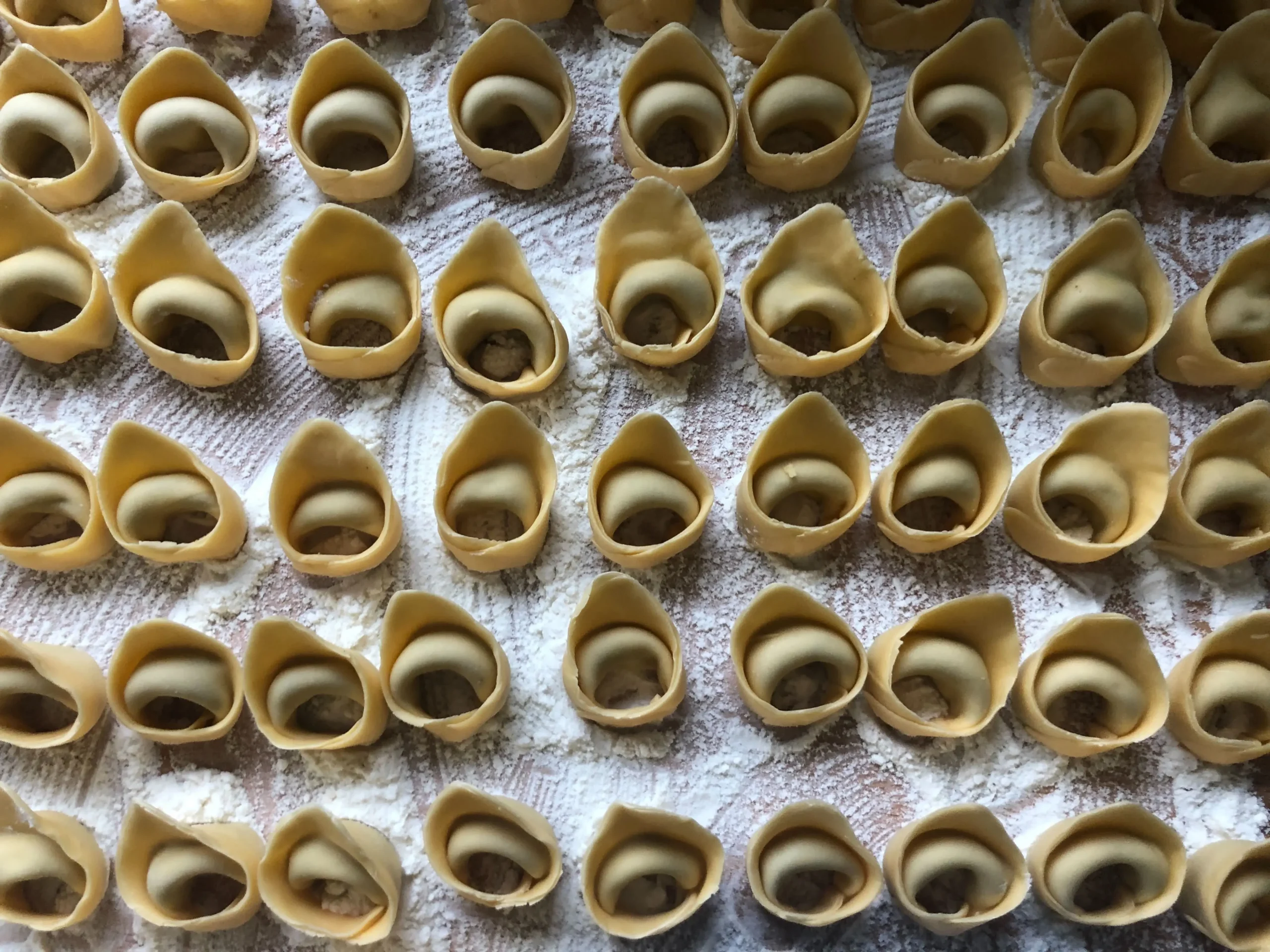
Cappelletti vs. Tortellini: unveiling Italian stuffed pasta secrets
Italy is renowned for its passionate culinary debates, and one of the fiercest revolves around tortellini and cappelletti. These two delicacies embody the rich gastronomic tradition of Emilia Romagna, representing not only two distinct dishes but also two different culinary approaches.
Both pastas are stuffed, crafted from egg dough, and typically served in broth. However, that’s where the similarities end, because though they may seem alike at first glance, they are fundamentally different. First and foremost, it’s essential to emphasize that tortellini are strictly from Emilia, whereas cappelletti are 100% Romagnoli.
The most apparent difference lies in the filling: while tortellini adhere to a strictly codified recipe registered at the Bologna Chamber of Commerce, cappelletti lack an officially registered recipe, meaning you can find them in many different variations. In the vast majority of cases, the filling is ricotta-based, complemented by other soft cheeses, Parmigiano Reggiano, nutmeg, raw eggs, and lemon zest.
The shape also plays a significant role in distinguishing these two specialties. Tortellini are small and resemble belly buttons, while cappelletti, as the name suggests, look like small medieval hats. In fact, it’s said that they were inspired by the hats worn by men during the Middle Ages. They are larger than tortellini and feature a thicker dough, allowing them to hold a more generous filling.
In conclusion, the rivalry between tortellini and cappelletti showcases how rich Italian cuisine is in traditions and regional variety. Both of these dishes are delicious and cherished worldwide, each holding a special place in Italian gastronomy.
Ravioli: timeless delicacy of Italian cuisine
Ravioli, a beloved icon of Italian cuisine, is a type of stuffed pasta deeply rooted in history. These delicious morsels consist of two layers of egg pasta, typically square in shape, embracing a variety of fillings. Traditionally, ravioli are filled with cheese or meat, but their versatility extends to seafood and vegetable options as well.
Originating in Northern Italy, ravioli has, over centuries, adapted to regional preferences, taking on different forms like agnolotti in Piedmont and tortelli in Emilia and Lombardy. Their history can be dated as far back as the 12th century, when, according to legend, they were born in Gavi Ligure, Liguria. These initial ravioli were filled with lean ingredients like marjoram, cheese, and spices.
A prevalent version of ravioli includes a filling of ricotta and spinach, which is particularly popular in central Italy. However, the possibilities for fillings are vast, allowing ravioli to embody unique local flavors. An outstanding feature of ravioli is its egg-based pasta, which gives it a lighter texture compared to other types of stuffed pasta. This versatility allows for a variety of fillings, including fish, seafood, or a dominant presence of vegetables, in line with tradition.
Beyond the savory options, ravioli is also associated with a delightful sweet counterpart. In the Piceno area of Marche, sweet chestnut ravioli are a treat during Carnival. In Sardinia, you can indulge in Seadas, a sweet delight made with fried dough, pecorino, and lemon zest, often drizzled with local chestnut honey. Whether you prefer savory or sweet, ravioli holds a special place in the world of Italian stuffed pasta.
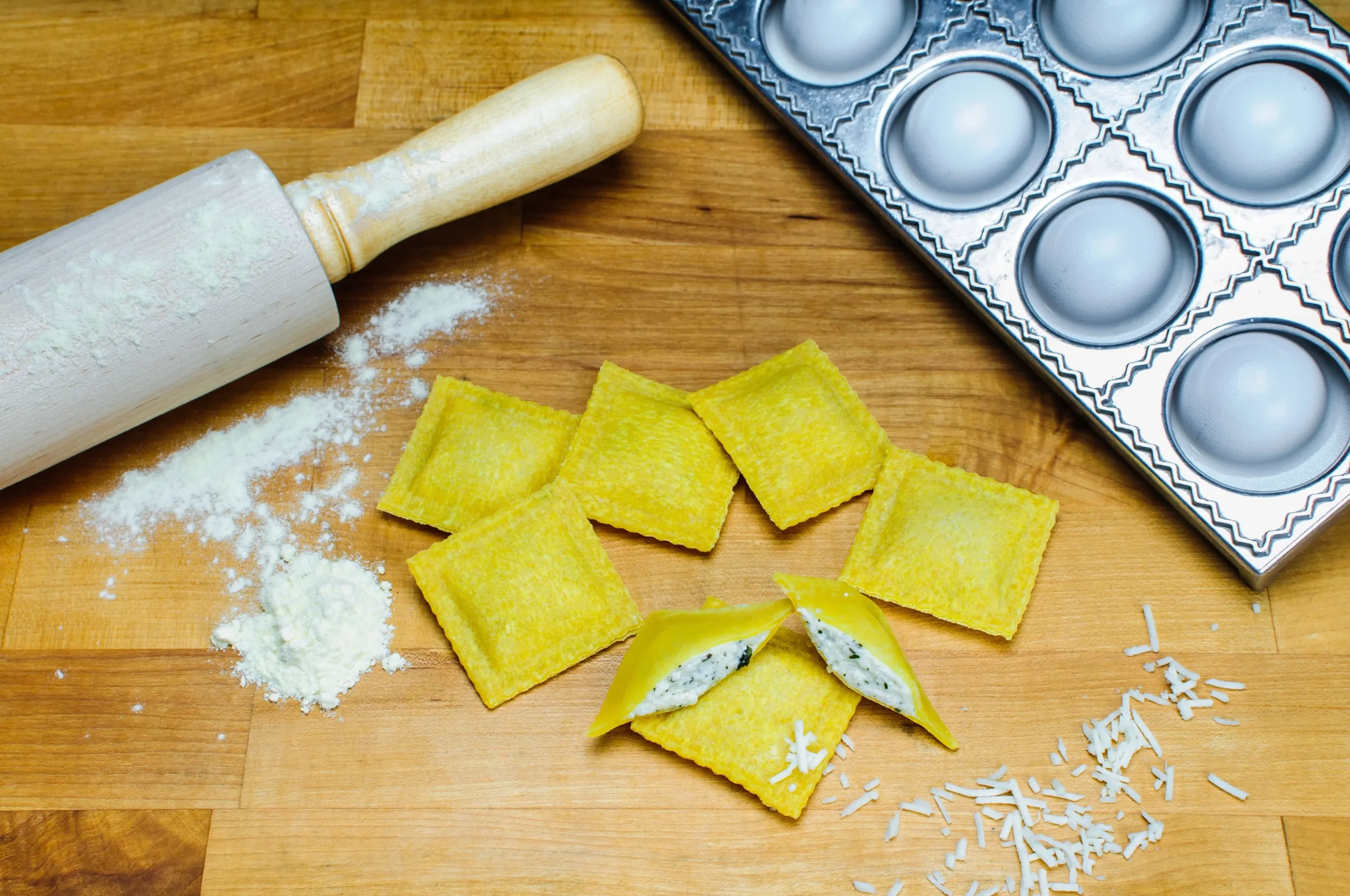
Agnolotti and Plin: Piedmont's culinary pride
In the realm of Italian stuffed pasta, Piemontese agnolotti claims a special spot. These petite squares of egg pasta, carefully sealed around a delightful filling of roasted meat, are a traditional delicacy of the Piedmont region.
This variety of stuffed pasta is particularly renowned in the Langhe and Monferrato areas, where local variations exist, such as the celebrated Agnolotti del Plin, even smaller in size and named for the characteristic pinch used to seal the pasta. The filling may vary based on the region, but roasted meat is a common ingredient. They are typically served with butter and sage or a savory roast sauce, sprinkled with Parmesan and truffle.
Originating as a recipe to salvage leftover meat, they were initially a staple of holiday feasts, but now they grace the table year-round.
In Piedmont, agnolotti represents genuine culinary excellence and is recognized as a traditional agri-food product (PAT) by the Ministry of Agricultural, Food, and Forestry Policies. This square delight is yet another reason to delve into the rich gastronomy of the region.
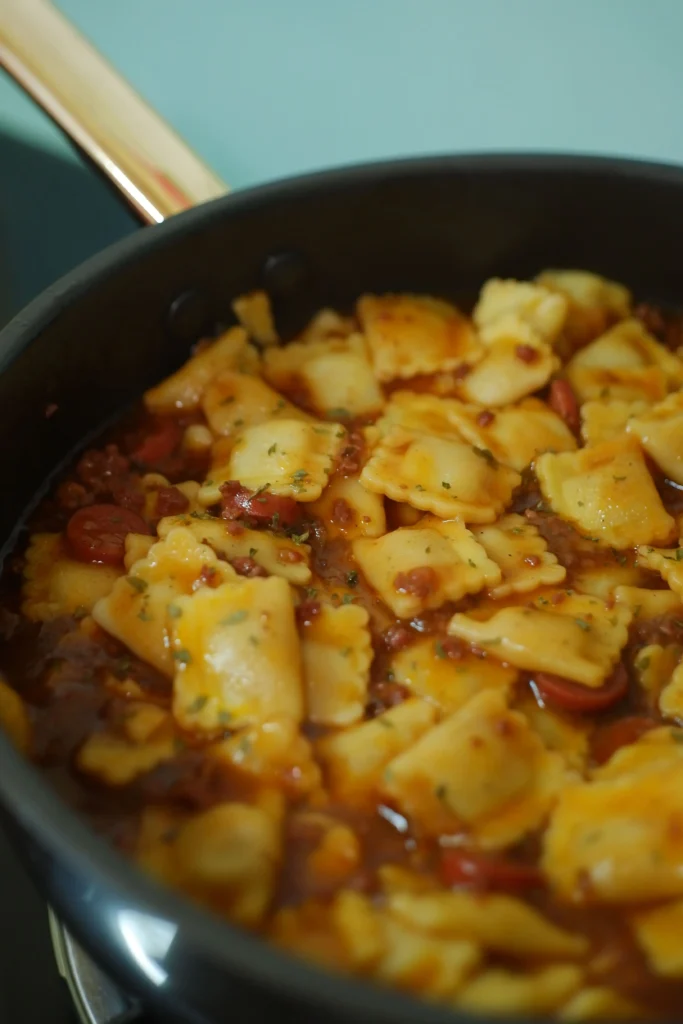
Casoncelli: A Taste of Bergamo and Brescia
Casoncelli, also known as Casonsèi in the local dialect, embodies the true delight of traditional cuisine from Bergamo and Brescia.
What truly sets them apart from other types of stuffed pasta is their filling. Alongside minced beef and pork, it includes Grana Padano cheese, eggs, breadcrumbs, amaretti biscuits, sultanas, pears, and a sprinkle of spices like cinnamon and nutmeg. All are expertly blended and wrapped in small circles of egg pasta.
Their preparation is quick, and with the delectable garnish of melted butter, pancetta, and a few sage leaves, they strike a perfect balance between the rich flavor of the filling and the lightness of the fresh pasta.
Originally a way to “recycle” leftover meat, casoncelli has secured a special place on Bergamo’s dining tables. Every family has its own secret recipe, adding that unique personal touch and making this culinary tradition truly one of a kind.
The quality mark “Bergamo, city of a thousand flavors” recognizes them as a true local gem, inviting you to unravel the secrets of the local cuisine through casoncelli in the Bergamo style.
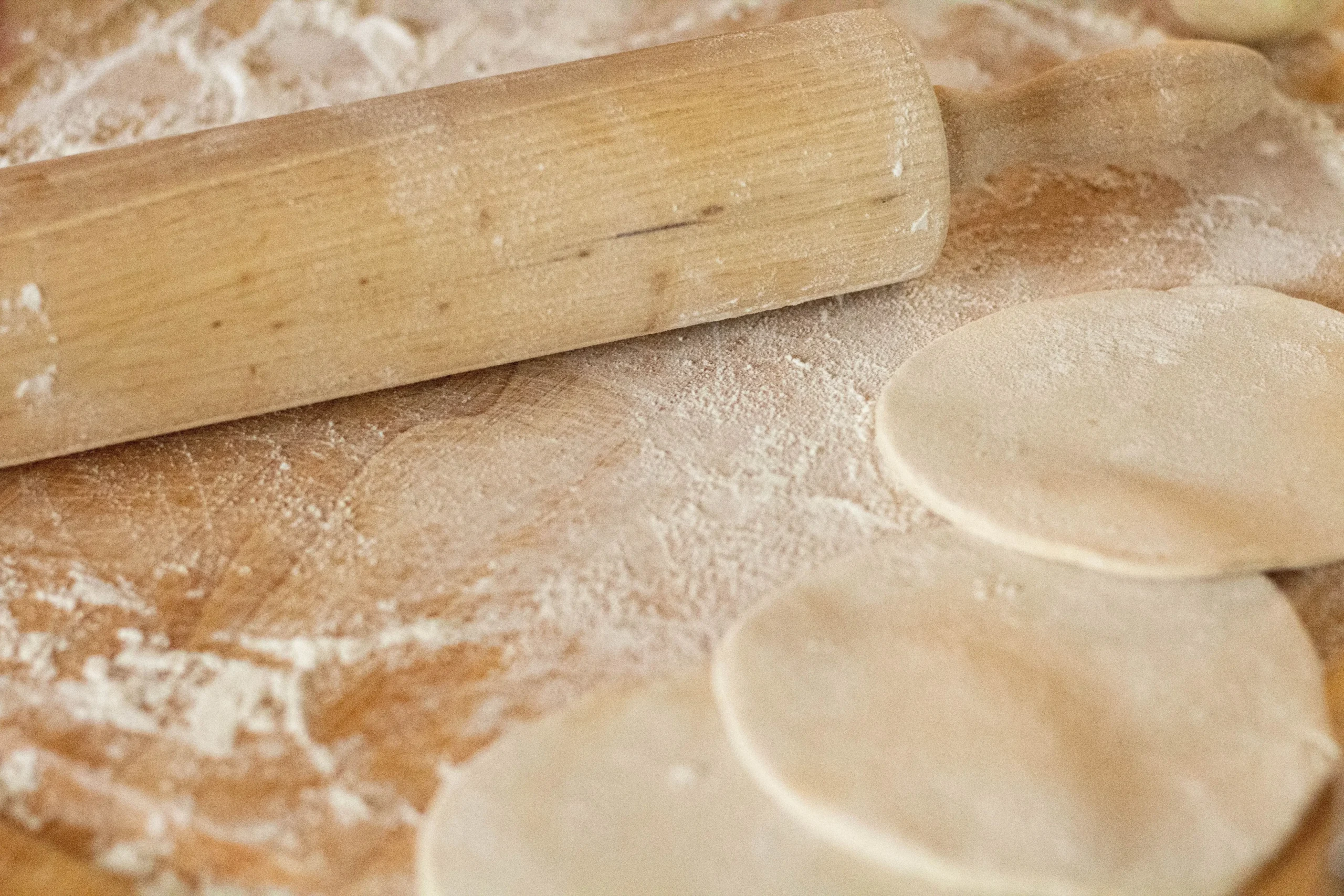
Culurgiones: Sardinia's Culinary Masterpiece
Let’s journey to Sardinia, a land of ancient traditions and authentic culinary marvels, where we can find the culurgiones. Born in Ogliastra, the central and eastern region of Sardinia, these ravioli are more than a mere dish; they symbolize tradition, wisdom, and a deep connection to the land.
The most distinctive feature is their wheat-grain-like closure, called “Sa spighitta,” reminiscent of a grain of wheat, a fundamental symbol of this land. Their filling is a burst of flavors: boiled potatoes, Sardinian pecorino cheese, and a mint blend to create a unique taste. As they made their way across the island, the fillings evolved with local ingredients. This led to delightful variations, such as fillings featuring chard and ricotta instead of potatoes or saffron taking the place of mint.
Not only do the flavors differ, but the preparation does too: the dough is made from semolina and wheat flour without the addition of eggs. This dish, born out of humble origins, has deep roots in Sardinian history. Traditionally prepared to commemorate the departed on November 2nd, culurgiones are considered a protective amulet against mourning and the evil eye.
The toppings vary based on seasons and local preferences, but the classic combination of tomato sauce and pecorino is always a hit. In 2020, Culurgiones d’Ogliastra earned protection as a “Protected Geographical Indication,” ensuring the authenticity and quality of this dish, which is still vibrant and present on Sardinian tables. Every bite of these ravioli is a journey through Sardinia, a fusion of tradition, passion, and authenticity that we invite you to discover.
Discovering the diverse flavors and stories behind these exquisite pasta types, from the iconic ravioli and tortellini to the Piedmontese pride, agnolotti, and the unique culurgiones of Sardinia, unveils the rich tapestry of Italian culinary heritage. Each type embodies its own charisma and traditions, inviting you on a delightful journey through Italy’s gastronomic wonders.
Craving more Italian flavors? Don’t miss our guide to the different types of Italian pizza!
Last day in town and want to enjoy it without the weight of your suitcases? Download our app to find your closest luggage storage and leave your suitcases for as long as you need.
Drop your bags and explore the city!
Find the perfect luggage storage nearby in just a few clicks and enjoy hassle-free exploration. Book your luggage storage today.

Drop your bags and explore the city!
Find the perfect luggage storage nearby in just a few clicks and enjoy hassle-free exploration. Book your luggage storage today.

Drop your bags and explore the city!
Find the perfect luggage storage nearby in just a few clicks and enjoy hassle-free exploration. Book your luggage storage today.

Play Store

App Store

Download the Bags Parking app!
Find your closest luggage storage and leave your suitcases for as long as you need. Enjoy your journey without the weight of your baggage.

If you liked this article, share it with your friends and follow us on our social!
You might also be interested in:
You might also be interested in:





